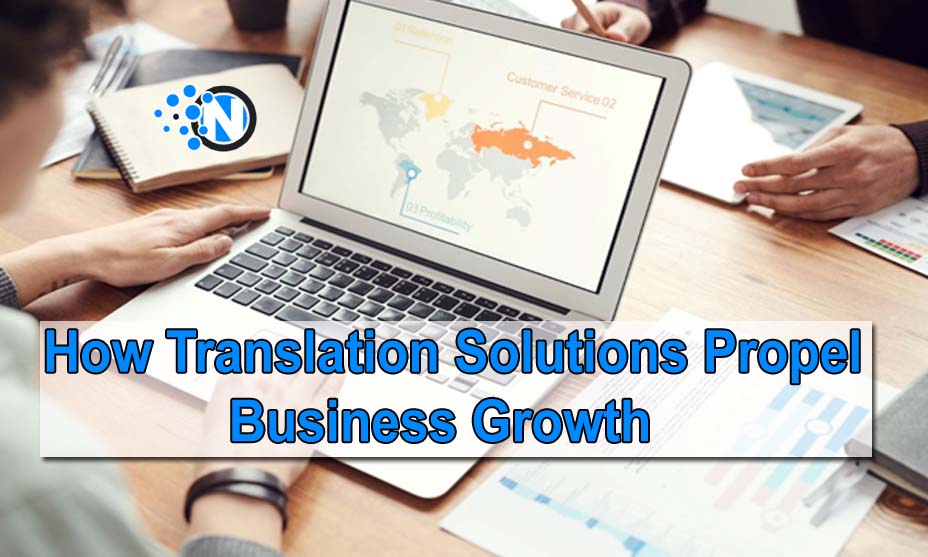From Local to Global – How Translation Solutions Propel Business Growth

In today’s world of vast global connections, businesses are no longer held back by geographical boundaries. The rise of the internet and rapid technological strides have led to a paradigm shift in corporate functioning, empowering businesses to reach a global audience with their products and services.
Yet, this boundless expansion comes with an array of obstacles, with language barriers emerging as the most prominent ones. Enter translation solutions, the unsung heroes that help translators navigate through these linguistic intricacies. Their role in catalyzing business growth is rather obvious, as they bridge language gaps and serve as conduits for seamless cross-cultural communication.
As we delve deeper, it becomes evident that these translation solutions pave the path for businesses to go from local to global, facilitating endeavors that transcend cultural confines and propel enterprises toward unparalleled growth.
The Globalization Imperative
Globalization has become an imperative for businesses of all sizes. The benefits of expanding into international markets are undeniable. By going global, companies can tap into larger customer bases, diversify their revenue streams, and reduce their dependence on any single market. Additionally, globalization can help businesses mitigate risks associated with economic downturns in specific regions and take advantage of growth opportunities worldwide.
However, while the rewards of globalization are substantial, so are the challenges. One of the most influential barriers to international expansion is the diversity of languages spoken around the world. Effective communication is crucial for building trust, establishing brand presence, and making sales. A failure to communicate in a prospective customer’s language can result in misunderstandings, lost opportunities, and damage to a brand’s reputation.
The Language Barrier Dilemma
Navigating international markets presents businesses with a formidable challenge: language barriers. This hurdle can obstruct effective communication, hamper customer interaction, and even lead to reputation issues in the eyes of prospective international consumers.
Recognizing the gravity of this issue is key, given that research consistently highlights consumers’ heightened engagement with content delivered in their mother tongue. Enter translation solutions, the antidote to these linguistic challenges.
More than anything else, they serve as a tool for clear communication, bridging gaps, and fostering seamless interaction. As businesses aim to transcend borders and cultures, these solutions emerge as the linchpin, ensuring that language no longer acts as a roadblock but rather as a gateway to enhanced global engagement.
Below, we will explore in further detail how these top-notch translation solutions can help a business transpire from local to global and propel business growth.

Unlocking Global Opportunities
The decision to venture into international markets doesn’t just broaden horizons; it unleashes countless untapped opportunities for companies.
Translation solutions, in particular, serve as the catalysts that empower businesses to grasp these prospects. As language barriers crumble, companies find themselves equipped to establish profound connections with potential customers.
This interaction transcends surface-level communication, delving into accepting as true building and constructing long-lasting relationships with customers. Take, as an instance, an eCommerce platform that gives products in multiple languages. This strategic move doesn’t merely accommodate diversity; it actively attracts and secures customers from various cultural backgrounds, as they feel more welcome if they can engage with the content in their native language.
In doing so, the platform doesn’t just augment its sales figures; it cultivates a community of loyal brand advocates. In essence, translation solutions serve as the gatekeepers to a realm where businesses foster cross-cultural relationships and realize their full global potential.
Cultural Relevance and Sensitivity
Language is deeply intertwined with culture, and accurately conveying cultural nuances is essential for effective communication. A message that is culturally insensitive or misinterpreted can have detrimental effects on a company’s reputation.
Translation solutions used by professional linguists who understand the target language and culture ensure that the company’s messaging remains culturally relevant and resonates with the target audience. This level of sensitivity can make the difference between a successful global campaign and one that falls flat.
Cultivating Trust and Establishing Credibility
In business growth, trust is the foundation on which businesses forge successful relationships with customers. When a company aims to engage with its customers in their language, it means more than just linguistic alignment; it reflects an earnest dedication to understanding their needs and preferences. This concerted effort becomes the cornerstone for nurturing a sense of trust and credibility, consequently fortifying the fabric of customer relations.
Translation solutions centered on precision and authenticity are pivotal in this dynamic. They are the tools that stimulate accurate communication, ensuring that messages resonate without distortion across cultural and linguistic boundaries.
By doing so, these solutions effectively instill confidence and credibility in a company’s global pursuits. In a world where customer trust is a top priority, translation solutions emerge as the architects of robust customer loyalty, encouraging businesses to flourish in uncharted international territories.
Efficiency and Consistency
Integrating translation solutions not only surmounts language barriers but also introduces efficiency and uniformity to a business’s communication endeavors. Using translation tools, enterprises can promptly convert extensive content, from product descriptions and user manuals to marketing materials.
This seamless process streamlines operations, cuts expenses, and upholds uniformity across diverse touchpoints. The importance of consistent messaging and overcoming linguistic obstacles cannot be overstated. It is the cornerstone for fortifying a brand’s identity and its value proposition.
Therefore, the implementation of translation solutions is not merely a means to transcend linguistic boundaries. But as a strategic maneuver to foster streamlined communication, elevate brand coherence, and lay the foundation for global success.
Conclusion
In an increasingly interconnected world, business growth cannot overlook the importance of effective communication across languages and cultures. Translation solutions serve as the bridge that enables companies to transition from local players to global contenders.
By breaking down language barriers, understanding cultural nuances, and fostering trust. These solutions create a solid foundation for successful international expansion as businesses continue to embrace the opportunities of globalization. Investing in high-quality translation solutions will remain critical to sustained growth and success.




